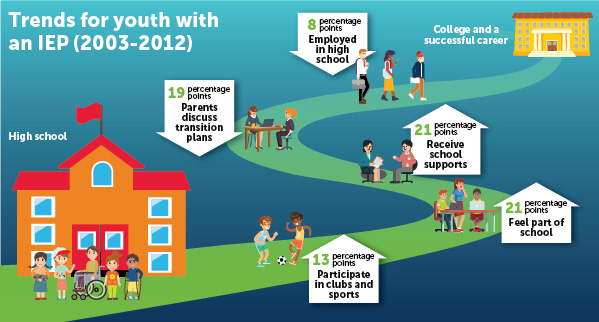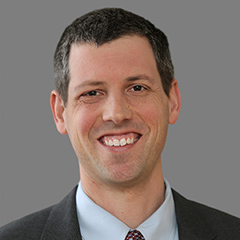U.S. Department of Education, Institute of Education Sciences
Policymakers and educators have long recognized the importance of addressing the needs of youth with disabilities. Beginning with landmark legislation in 1975 and continuing through the most recent updates to the Individuals with Disabilities Education Act (IDEA) in 2004, the U.S. Congress has mandated that children and youth with disabilities have access to a free appropriate public education and provided funds to school districts nationwide to help serve them.
To support efforts to help secondary school youth prepare for successful futures, the U.S. Department of Education has sponsored longitudinal studies examining their diverse backgrounds, secondary school experiences, and preparations for life after high school.
Mathematica conducted the National Longitudinal Transition Study (NLTS) 2012 for the U.S. Department of Education’s Institute of Education Sciences to gather current information on youth with and without disabilities. The sample consisted of secondary school students who receive special education services under IDEA—that is, those with an individualized education program (IEP)—as well as two other groups of youth without an IEP: (1) those with an impairment that qualifies for accommodations under Section 504 of the Rehabilitation Act of 1973 and (2) students with no identified disability. The study also compared youth with different disabilities and used data from two prior NLTS studies to examine trends in their characteristics and experiences over three decades.
Data for the study came from surveys of parents and youth completed in 2012 or 2013. The survey data enabled the study to address five questions of interest to policymakers, educators, and other stakeholders:
- What are the background characteristics of youth and the schools they attend?
- What challenges do youth face relating to health, functional abilities, and independence?
- How engaged are youth in school and with friends?
- What academic and special education supports do youth receive?
- How are youth preparing for life after high school?
Three report volumes address these questions. Volume 1 compares youth with an IEP and youth without an IEP. Volume 2 compares youth in different disability groups. Volume 3 compares youth in special education over the past three decades. Together, the volumes aim to inform efforts by educators and policymakers to address the needs of youth in special education.
The main findings from the study are:
- Compared with other students in 2012, youth with disabilities were more socioeconomically disadvantaged and less likely to have experiences and expectations associated with success after high school. For example, they were more likely than other students to struggle academically and less likely to take steps to obtain postsecondary education and jobs.
- From 2003-2012, youth with disabilities grew more engaged in school and made greater use of school supports, outcomes encouraged by IDEA 2004. At the same time, they were less likely than in the past to participate in some key transition activities.
- Among the disability groups in 2012, youth with intellectual disability, autism, deaf-blindness, multiple disabilities, and orthopedic impairments appear most at risk in their preparation for life after high school.
Mathematica also prepared a design documentation report that provides technical information on the NLTS 2012, as well as a restricted-use data file and documentation for researchers to conduct secondary analyses.
Evidence & Insights From This Project

New Report Examines Changes Over Time in the Characteristics and Experiences of Special Education Students in High School
A large-scale study by Mathematica Policy Research finds that over the past decade (2003–2012), high school youth participating in special education became more engaged in school and increased their use of school supports.
Learn MoreRelated Staff
Efficiency Meets Impact.
That's Progress Together.
Mathematica delivers evidence-based solutions to optimize programs and policies for efficiency, cost savings, and measurable impact. Learn more about becoming a client or partner.
Work With Us

